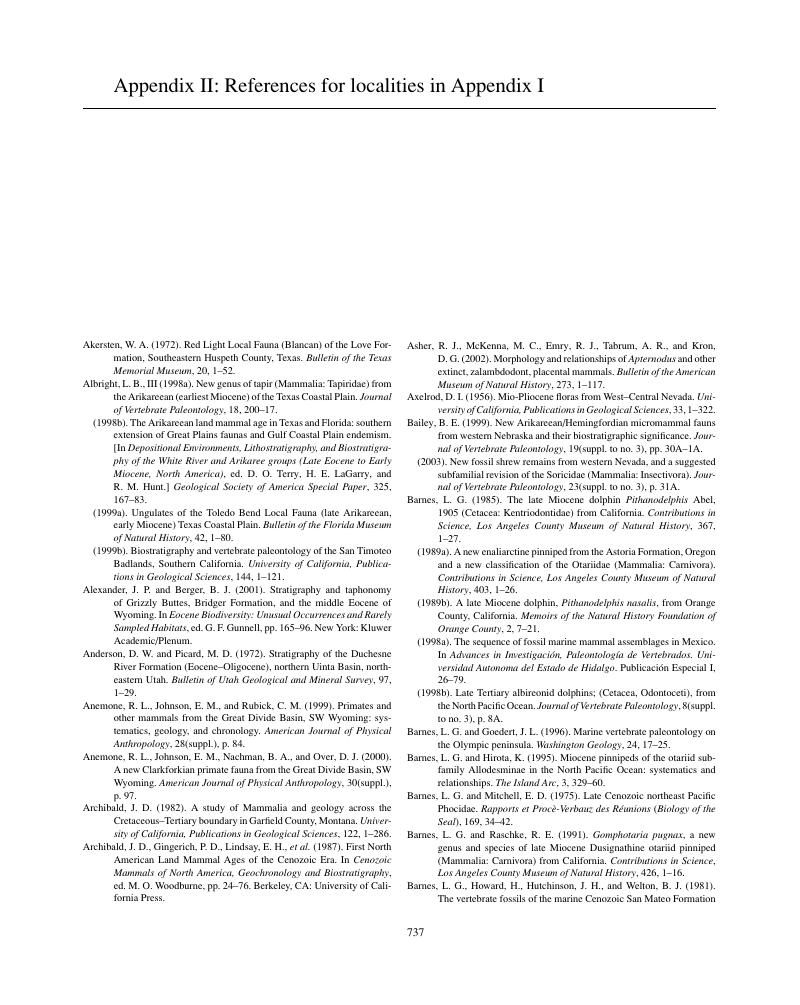Book contents
- Frontmatter
- Contents
- Contributors
- 0 Introduction
- Part I Non-eutherian mammals
- Part II Insectivorous mammals
- Part III “Edentata”
- Part IV Archonta
- Part V Glires
- Part VI Marine mammals
- Appendices
- Appendix I Unified locality listing
- Appendix II References for localities in Appendix I
- Appendix III Museum acronyms
- Index
- References
Appendix II - References for localities in Appendix I
from Appendices
Published online by Cambridge University Press: 07 September 2010
- Frontmatter
- Contents
- Contributors
- 0 Introduction
- Part I Non-eutherian mammals
- Part II Insectivorous mammals
- Part III “Edentata”
- Part IV Archonta
- Part V Glires
- Part VI Marine mammals
- Appendices
- Appendix I Unified locality listing
- Appendix II References for localities in Appendix I
- Appendix III Museum acronyms
- Index
- References
Summary

- Type
- Chapter
- Information
- Evolution of Tertiary Mammals of North America , pp. 737 - 758Publisher: Cambridge University PressPrint publication year: 2008



